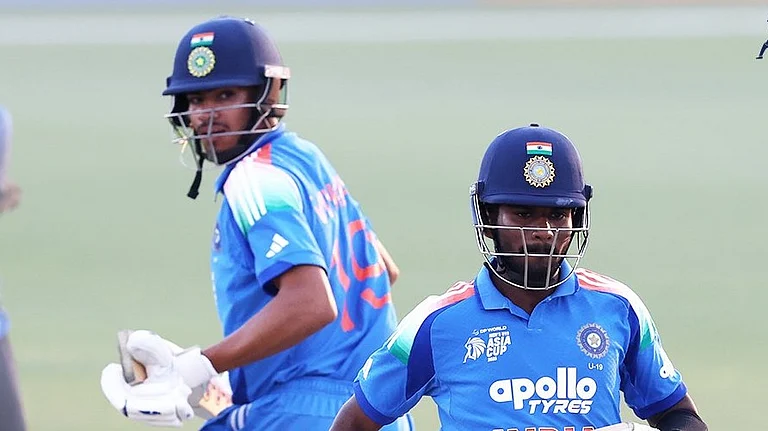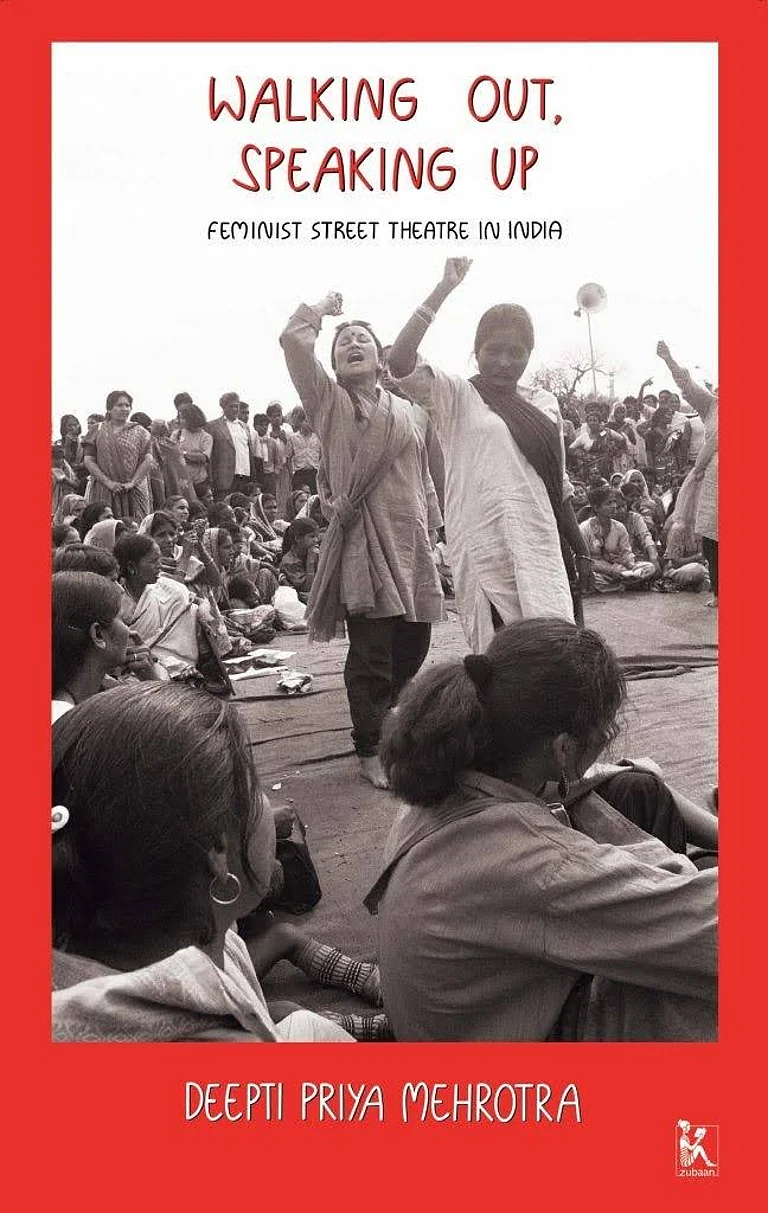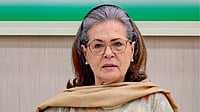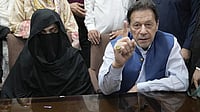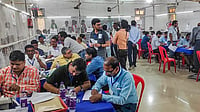Come then, let us play at unawares,
And see who wins in this sly game ofbluff,
Man or mosquito
—D.H. Lawrence, The Mosquito
Well, the story so far, in this panic-stricken month of October, is: the mosquito seems to be winning. And no wonder, since man has only belatedly summoned up the energy to fight. Large swathes of southern and western India are in the grip of debilitating chikungunya, a word that rang no bells for most Indians until a few months ago, but whose meaning in Tanzania's Makonde language—"that which bends up"—is now lodged for life in the memory of TV-watchers and newspaper readers.
While this mosquito-transmitted fever is making a comeback in India after over three decades, is determinedly heading northwards, the toll from a more familiar enemy, dengue fever, and its severe form, dengue haemorrhagic fever (DHF), is rising Sensex-like. Over 2,700 cases and 36 deaths, the official enumerators said, on October 4, under-reporting perhaps, as many critics allege. A week later, on October 11, the numbers had risen to 4,039 cases, and 84 deaths. And they will rise further, until temperatures dip and become less kind to mosquitoes.
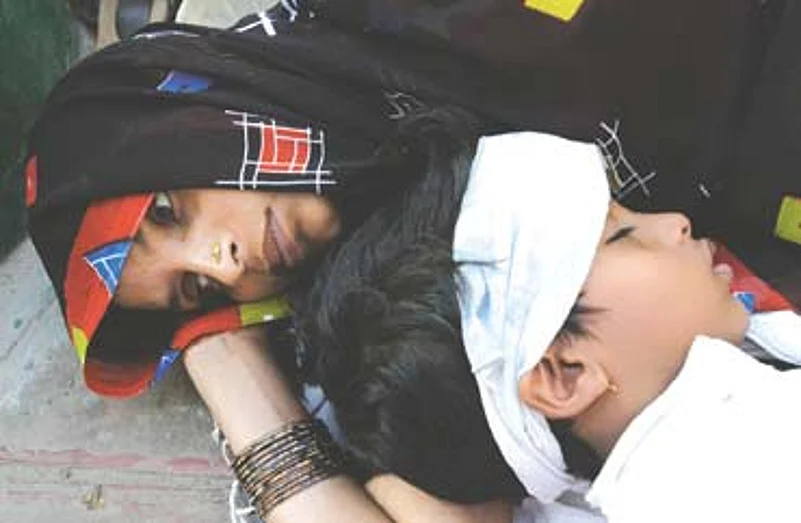
Both mother and son are suspected of dengue, at AIIMS, Delhi
Technically, the dengue outbreak may not yet be an epidemic—certainly, the government will avoid using the damaging e-word until it has no choice—but politically it already is. Headlines announcing a visit by its transmitter, the highly domesticated but far from retiring Aedes aegypti mosquito, to Prime Minister Manmohan Singh's family; a health infrastructure struggling to cope with the rush of the ill and the panicking; the wailing of bereaved relatives on prime-time TV; politicians using the opportunity to sling mud at each other; the blame game being played out between civic authorities and citizens about who is more responsible for encouraging mosquitoes to go forth and multiply.
In the case of chikungunya, the e-word was unavoidable. By the middle of last week, it had notched up over 1.3 million victims, and at the very least, taken away 130 lakh man-days from the economy. Contradictory statements chased each other over about a hundred deaths—mainly in Kerala— linked to this fever, which is not regarded as life-threatening. "I am not an expert on chikungunya but neither is the Kerala chief minister, who is claiming the disease has killed over 80 people in the state," retorted Union health minister Anbumani Ramadoss, as the media speculated—feverishly—on whether the disease was turning deadly due to mutations in the virus, or the deaths were due to secondary complications in old and ill patients, already suffering from serious illnesses. Health authorities and most experts are of the second view, and are now scrambling for evidence to substantiate it, amid a welter of confusion.
Direct killer or indirect, chikungunya has unleashed much suffering that statistics fail to convey. Not just the crippling joint pains that are, in some cases, refusing to go away for months, making it difficult for some patients to even brush their teeth. In Karnataka, the worst-affected state, the livelihoods of small farmers and daily-wage labourers were swept away, as they pawned goods, sold livestock and blew up their savings to get treatment that the government health system failed to provide, from often unscrupulous private practitioners. For cotton farmers in Maharashtra's 'suicide belt', after crop failures due to poor rain and rising input costs, there was chikungunya.
In other ways too, Indians are counting the cost of being bitten. On the very brink of the October-April tourist season, hotel owners in Delhi and the owners of 300 houseboats in Kerala's tourist-friendly backwaters, are worrying whether record bookings will now unravel. NRI Keralites in the Gulf are already cancelling their bookings, according to travel agents. A blow to Kerala, ambitiously targeting Rs 1,500 crore from the tourism sector this year over the Rs 7,073 crore last year.
But God's own country, which put all its contradictions on display during the epidemic, has partly itself to blame. The one-time model state that had eradicated many vector-borne diseases through rigorous surveillance and monitoring of mosquito density and breeding, was slow-footed in its response. The state-level mosquito clean-up drive began three months after the infection had been detected. As chikungunya sneaked in across the border and advanced 500 km along the state's lush coastal strip, primary health centre doctors at the heart of the state's much-vaunted 50,000-strong healthcare delivery network were busy with a work-to-rule agitation for 150 days, lasting until mid-September. That gave chikungunya enough time to wreak havoc in places like Cherthala taluk in Alappuzha, which has a mosquito index as high as 25 to 50 per cent, and from where the controversy over the deaths emanated. In the country's most literate state, public awareness on how to protect yourself from the day-biting mosquitoes that transmit this disease was caught short.
Kerala's contradictions mirror India's. The outbreaks dent our image as a would-be superpower, globalising economic mammoth and provider of "world- class" care to medical refugees from Essex and Oklahoma, looking for new hips and knees. Is it unfair to say that when outbreaks of mosquito-transmitted diseases are, in a sense, Acts of God? Yes, they are hard to banish from sub-tropical and tropical climes that encourage mosquito breeding, and more so, it is believed, with the climatic changes wrought by global warming. Warmer temperatures, torrential rains, intermittent rainfall, flooding, all help. So does demographic explosion and migration. And true, the viruses spread as fast as people move around—taking supposedly "urban" diseases like dengue to rural areas, and across geographical borders. And they confound us by developing resistance to insecticides or mutating.

Dengue patients waiting at a Delhi hospital
The chikungunya epidemic is said to have survived and flourished because it was an aggressive East African strain of the virus, new to India. There is much that we still don't know about dengue, as Dr Chusak Prasittisuk, coordinator, communicable disease control, at the who's Southeast Asia office points out. For example: what combination of primary and secondary dengue infections is more likely to cause dengue haemorrhagic fever; why middle-class, well-nourished children seem to be more likely to get haemorrhagic fever than poor kids; why there is a shift from school-age kids to adults becoming more severely affected by the disease.
Dr P.L. Joshi, director of the National Vector-Borne Disease Control Programme (the central nodal agency for preventing and controlling vector-borne diseases like malaria, dengue, lymphatic filariasis, kala-azar and Japanese encephalitis in India) is quick to stress the inevitability arguments. He points out that with all the political will in the world, even tiny, efficient Singapore has not entirely won its war against the aedes. In 2005, there were 13,984 dengue fever cases in the tiny island, and 19 deaths. "No one can prevent these outbreaks," says Joshi.
And yet, there's a lot that "inevitability" arguments don't cover, about our battles with these tiny, winged, virus-transmitting terrors. They don't fully explain why Japanese encephalitis cases and deaths rose more than threefold in India between 2001 and 2005, and the gap between major outbreaks of dengue is "reducing alarmingly", as Dr U.S.N. Murthy of the Indian Institute of Chemical Technology, puts it; or the fact that India, after having come close to vanquishing malaria in the mid-'60s, now grapples with around two million cases a year.
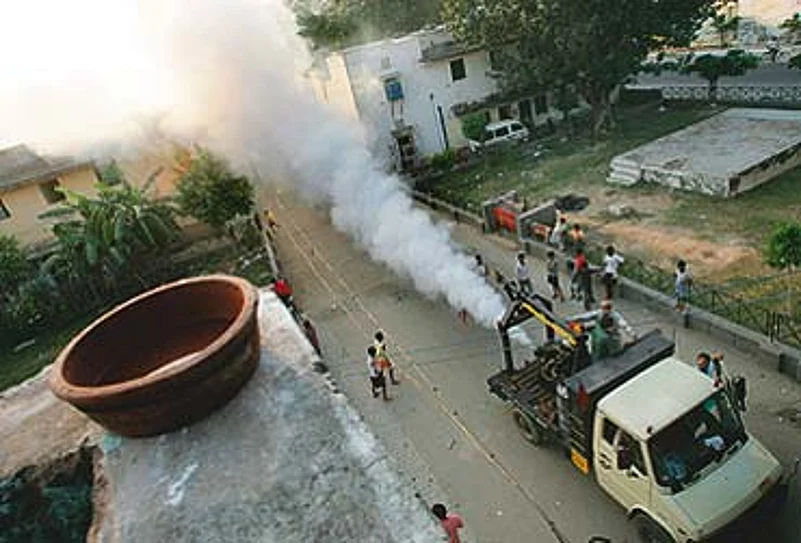
Fumigant sprayer in a New Delhi locality
The growing impact of these diseases is also an indictment of the way we live, as individuals and societies, and of our health infrastructure. The flourishing of the home-loving aedes, not able to fly beyond 100 metres, breeding in all the little places around houses, has put the spotlight on poor civic sense and sanitisation awareness among individuals, not excluding the educated affluent. "These diseases are linked to changing lifestyles," says Joshi, "people installing more and more coolers, buying fast food and throwing containers that collect water here and there."
But also indicted are the public hospitals that allow mosquitoes to proliferate on their campuses, as 19 were recently found to have done in Delhi, including the premier AIIMS; civic authorities who don't educate, motivate, inspect, destroy larvae on time, but produce large clouds of mostly ineffective insecticide-laden fog when all hell breaks loose; dismal water management that forces citizens to store huge quantities of water and collected rainwater that serve as ideal mosquito-breeding sites; poor surveillance of mosquito density and reporting of cases by the public healthcare system.
"Warnings should come from the health system, but they don't. The health system gets to know that something is badly wrong via media hype, and when political bosses shout," says epidemiologist Dr Lalit Nath. He believes that chikungunya was ignored because it was not a killer. Says Bir Singh, professor of community medicine at AIIMS, "We have a well-developed health infrastructure, but only on paper."
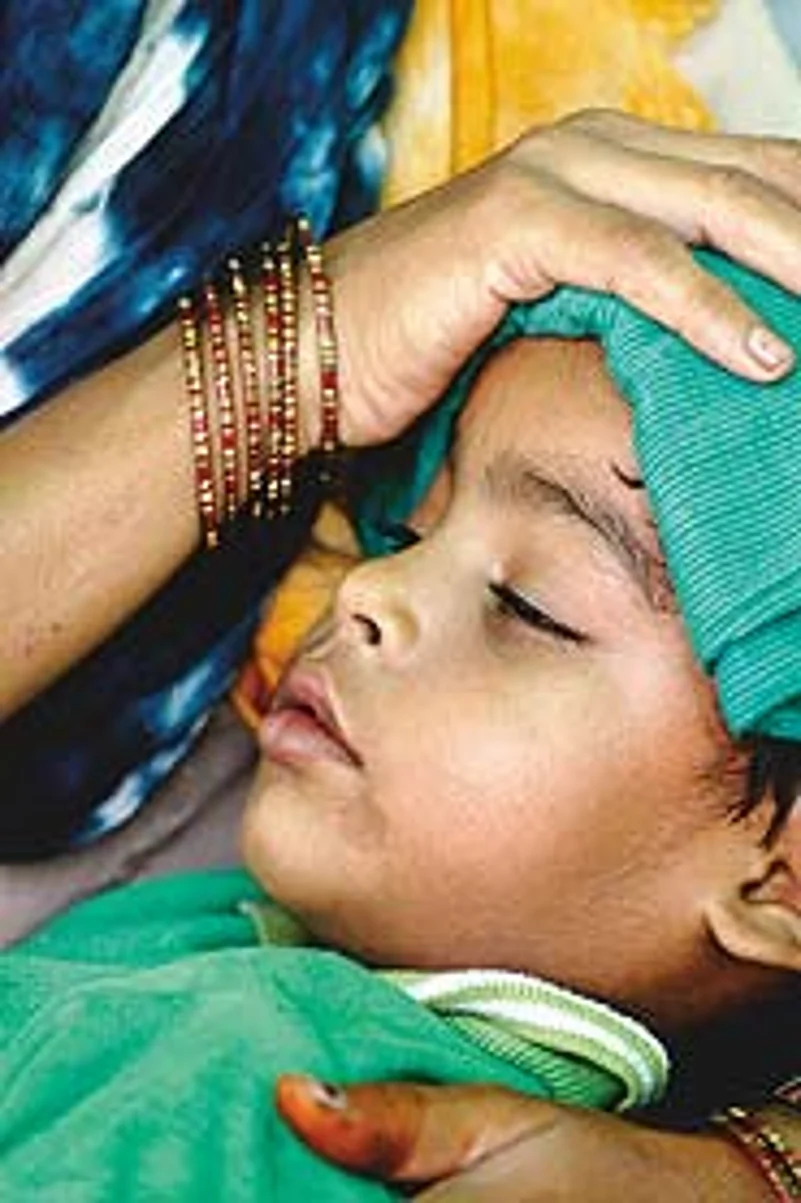
The system also fails patients, as we've been reminded over and over again in recent days, with not enough beds, not enough blood, not enough testing kits, when they are needed most. Dengue, even in its most severe forms, need not be a killer. Says Prasittisuk, "Early recognition and proper management will save lives." Thailand, far worse affected by dengue than India, has brought its Case Fatality Rate (percentage of deaths to cases) down from 40 per cent in the early '50s to just 0.2 per cent now. This was the outcome of a campaign focused on developing public recognition of the classical signs and symptoms of dengue, and training of medical community in careful monitoring and treatment of patients at the critical stage, to prevent haemorrhaging and dengue shock syndrome. In India, theCFR was only 0.05 in 1991, but 3.30 in 1996, 1.3 in 2005, and on the basis of the number of cases reported so far in 2006, it is around 2 per cent. But figures may not be very truthful. For over a decade, numbers put out by India on dengue cases have only been based on reports from 18 states and union territories, out of the 35. Joshi claims there are no cases from the missing states, but international experts are sceptical.
There are no miracles about to happen in the near future. A vaccine for dengue is at least 10 years away, experts say. (Kits enabling rapid diagnosis and confirmation of dengue may happen sooner.) The large-scale efficacy of "bioweapons"—larvae-killing organisms—and genetically modified mosquitoes is yet to be proved. So, it's all down to better surveillance, prevention and control. And predictably, mid-outbreak, the air is thick with good intentions, or as the jargon goes: "coordinated, multisectoral vector management plans". But when the cases dwindle, and the panic level drops, will we still ask, as Lawrence does:
Can I not overtake you?
Are you one too many for me, Winged Victory?
Am I not mosquito enough to out-mosquito you?







